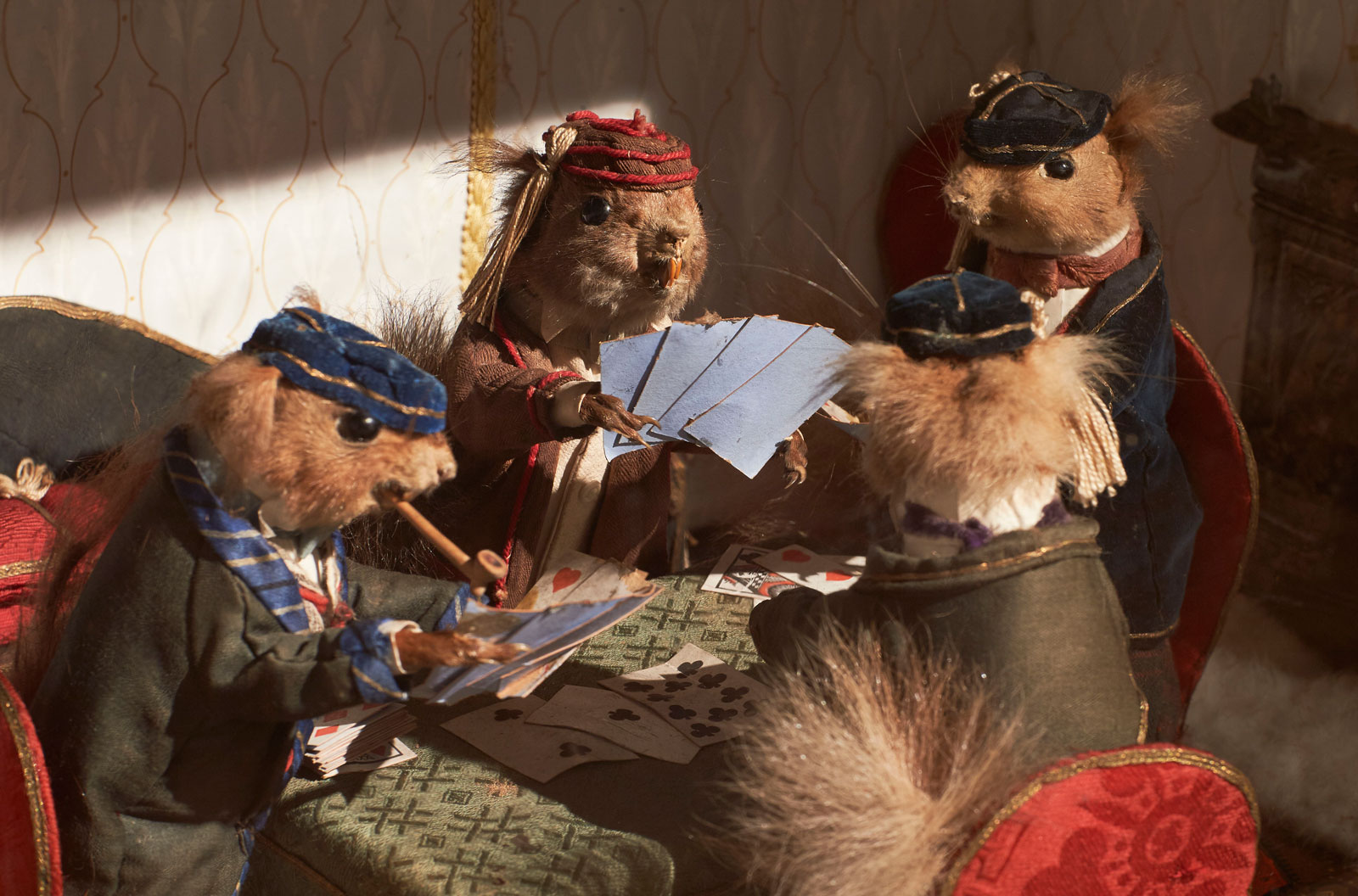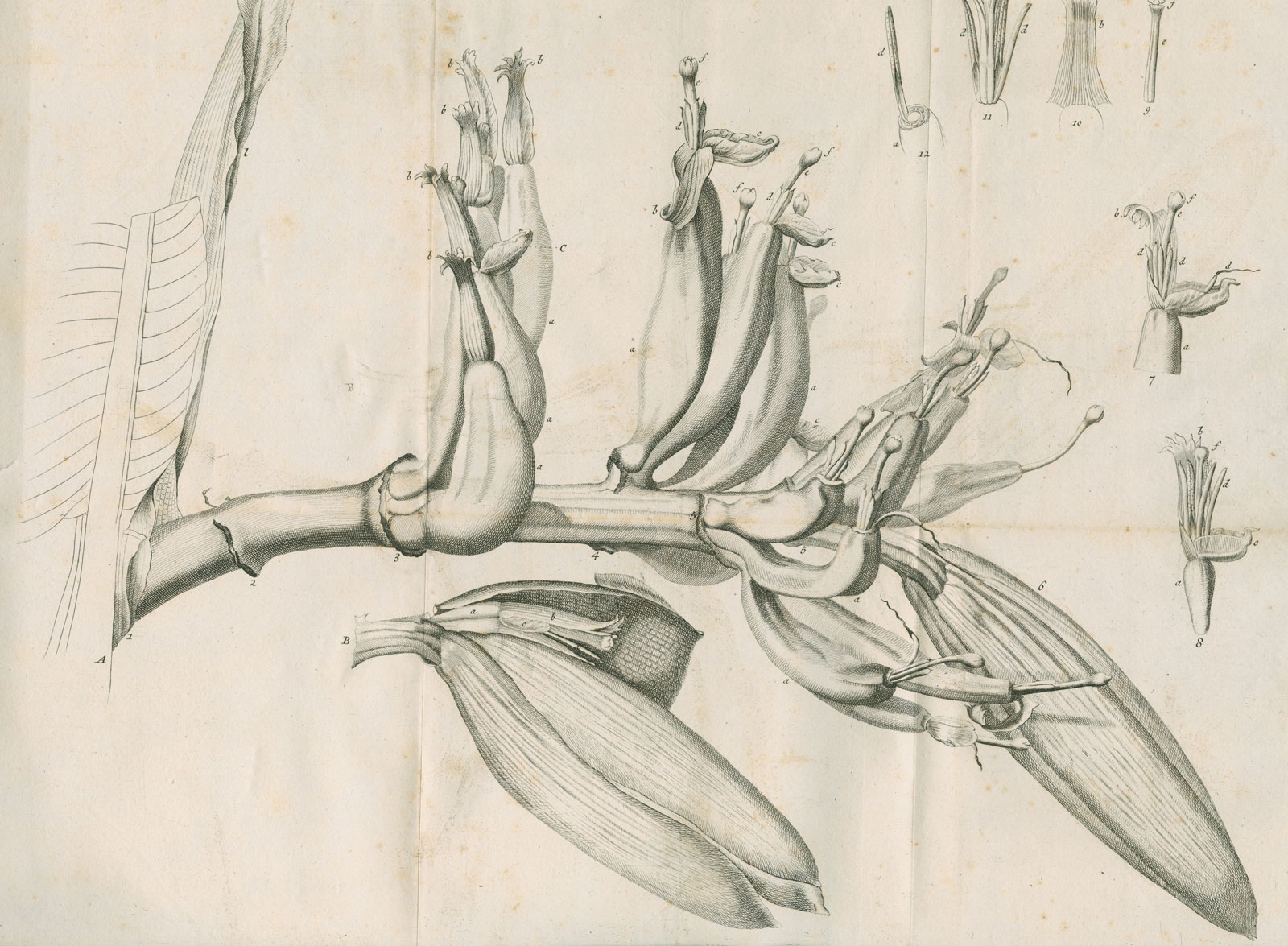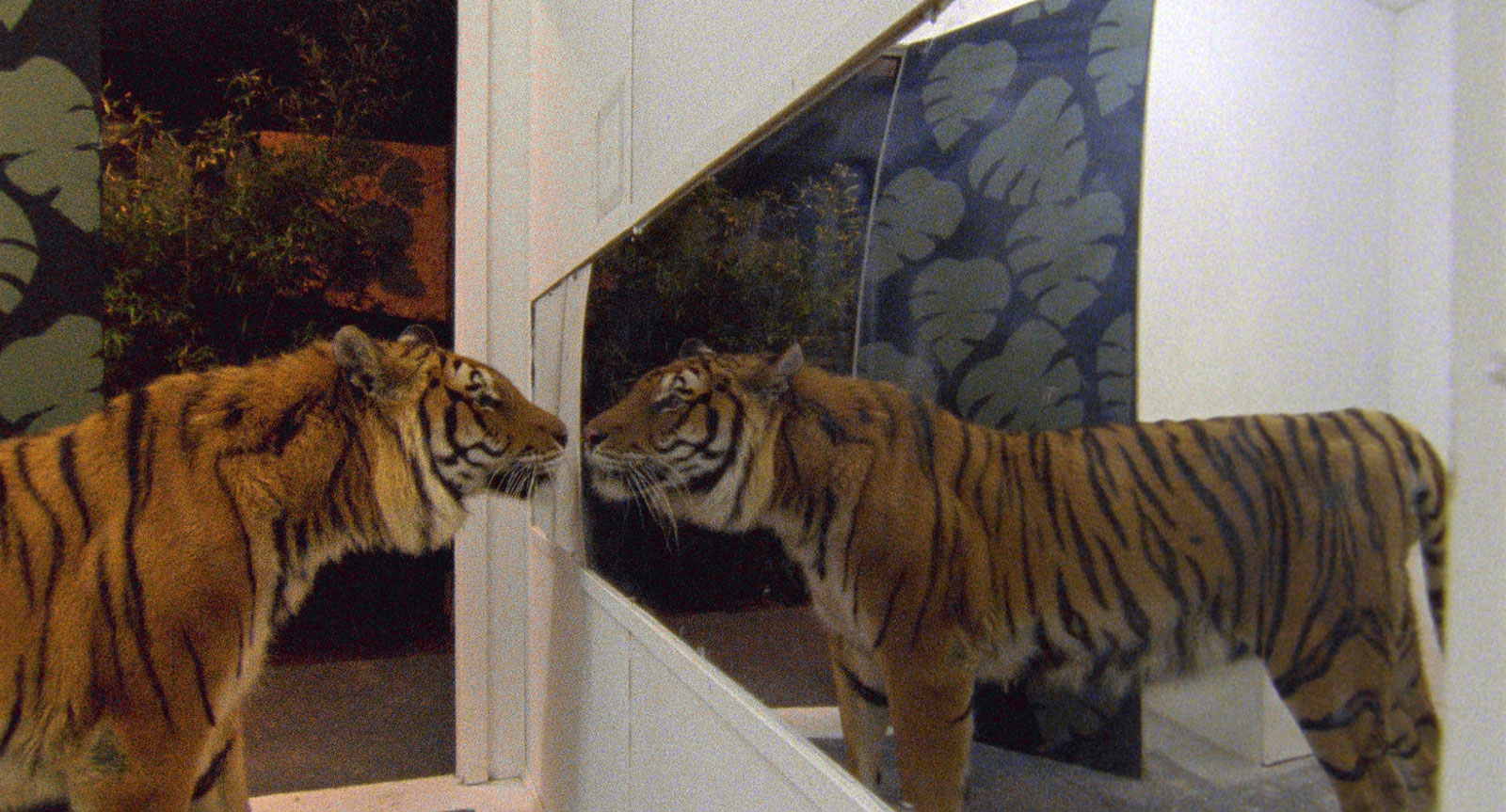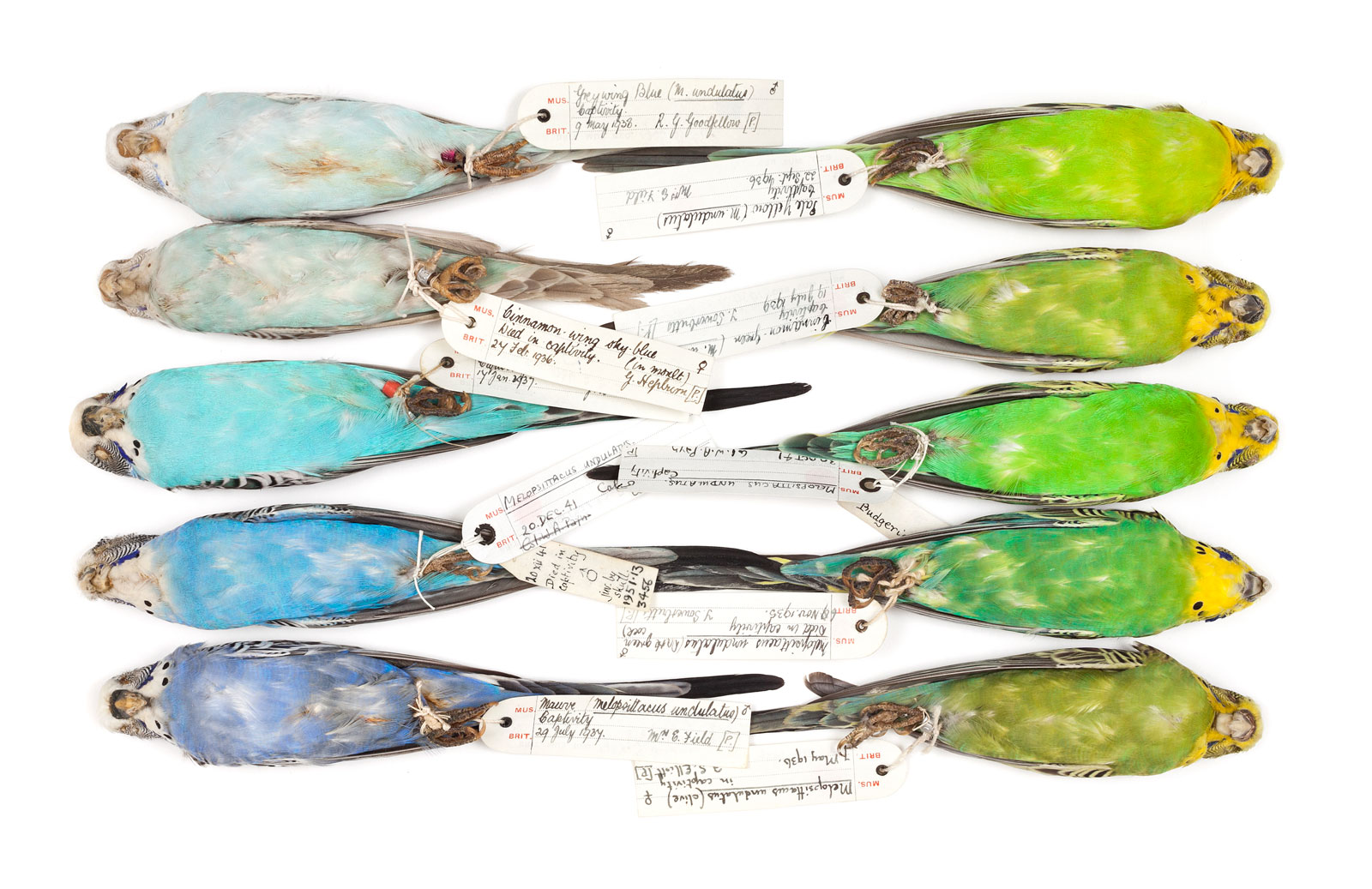 Linnean Society, London
Linnean Society, LondonPressed fish specimen (Zeus faber) collected by Carl Linnaeus, 1758
The first instinct of an eighteenth-century naturalist when he (and they were usually “he”) saw a bird or animal that he didn’t recognize was to shoot it. Then draw it, dissect it, stuff it, identify it, and name it. Cabinets in country vicarages, grand mansions, and learned societies were full of “skins”—of fish, birds, reptiles, mammals. The naturalists felt part of he great Enlightenment drive to order nature, an ordering that was in its way both as arrogant and as humble as accepting the Biblical “great chain of being.” In both systems humans came top, whether in the Garden of Eden or a scientific collection. (Indeed Genesis makes Adam sound like the earliest taxonomist: “whatsoever Adam called every living creature, that was the name therof.”) The fascinating exhibition at the Wellcome Collection in London, “Making Nature,” investigates our long history of trying to comprehend the wealth of the animal world, while also making us dizzily aware that we are, after all, animals ourselves. Where do we fit? How have our visions of nature changed? How responsible are we for today’s rampaging loss of habitat and species?
One of the joys of these darkened rooms is the way that works of art share space with the scientific exhibits, often making the latter themselves seem fantastical. The items on show range from children’s games and Beatrix Potter’s careful drawings to black humming-bird plumes used as a headdress, or the bizarre taxidermy diorama from 1900 by Walter Potter (no relation to Beatrix), Squirrels Playing Cards. Leaping forward a century, in Edwina Ashton’s 2002 video Moth, the artist appears as a giant insect in her moth costume. While she floats through the rooms a deadpan voice reads from a natural history text, including chilling instructions: “To retain their colouring green insects should be killed by potassium cyanide while the emeralds should be killed by ammonia.” The effect is unsettling, reminding us that displaying “nature” is a complex, many-faceted, ever-changing imaginative act.
 Collection of Pat and Mary Morris
Collection of Pat and Mary MorrisWalter Potter’s taxidermy diorama, Squirrels Playing Cards (detail), 1900–1910
In Britain at the end of last year, we were enraptured by David Attenborough’s new BBC series Planet Earth 2. Gazing safely at our screens, we could marvel at flamingos on the icy South American lakes, at monkeys leaping across Indian rooftops, at snow leopards pacing the Himalayan peaks. There was something of this wonder, too, in the early attempts to catalog the natural world. It is astounding, for instance, to find at the Wellcome the great chart made by Carl Linnaeus, the father of taxonomy, for his Systema Natura in 1735 and to see an engraving of his bedroom papered with proofs of botanical drawings, or to imagine him poring over the dried and pressed fish that he established as a “type”—a primary indicator—for identifying a John Dory.
Linnaeus gave us the ordering we still use: family, genus, and species. He classed humans as animals for the first time, too, using the term homo sapiens in 1758. But is wisdom, or reason, really the quality that separates us from the animals? It’s typical of this challenging exhibition to display Jonathan Swift’s tough description of the ape-like Yahoos in the same room as the Linnaean chart, and to match John Wilkins’s “Great Ladder of Being” of 1783, which put “Man” firmly at the top, by quoting Borges’s essay on Wilkins, in which he invents a crazy Chinese encyclopedia, and concludes, “it is clear that there is no classification of the Universe not being arbitrary and full of conjectures.”
 Musa Cliffortiana (Clifford’s banana plant), engraving by Martin Hoffman, 1736
Musa Cliffortiana (Clifford’s banana plant), engraving by Martin Hoffman, 1736People wanted to see these creatures, as well as order them. The second room in the exhibition shows how “Displaying” reflects popular cultural beliefs about the way animals live in the wild, and how the first natural history museums founded in Western nations also had political undertones—as if trapping and naming wild animals was a symbolic act of empire, the domination of “savage” lands. Beneath that confidence ran a nervousness about ideas of evolution, as apparent in the designs here for Richard Owen’s Natural History Museum, his “Cathedral to nature,” which opened in South Kensington in 1881: Could Darwin’s theories be reconciled with the idea of a divine creator? Everywhere there are patterns imposed on apparent chaos, nowhere more beautifully that in Werner and Syme’s 1814 Nomenclature of Colours (which Darwin took with him on the Beagle), giving every shade in its subtle range an animal, vegetable, and mineral equivalent. Thus “Tile Red” appears in “The Breast of the Cock Bullfinch, Shrubby Pimpernel, and Porcelain Jasper.”
 Whipple Museum
Whipple MuseumSet of twenty-nine papier-mâche models of horses’ teeth by Dr. Louis Auzoux, France, circa 1890
By now, having left the chattering lunchtime crowds in the Wellcome’s café far behind, I was beginning to feel strangely disoriented, even uncomfortable. In observing the observers, I was becoming one of them, finding that nature comes draped in romantic myths as well as tagged with scientific labels. Over time, many zoos provided stories or famous animals that the crowds could identify with and take to their hearts, like the London Zoo’s Jumbo the Elephant, whose sale to Barnum’s Circus in 1882 roused a storm of protest. This kind of personal sympathy also prompted ideas of wilderness lands and lost innocence: when the Smithsonian taxidermist William Temple Hornaday traveled west to shoot bison for a new exhibit in 1886, the sight of the diminishing herds turned him into an early conservationist, founder of the Bronx Zoo. Yet to a Brit like myself, the myth of man as hunter, on the frontier plains, still seems oddly part of the American psyche. I laughed when I heard that Betsy DeVos, Trump’s new secretary of education, had suggested that Wyoming schoolteachers carry guns, in case a grizzly bear thundered into the classroom—but it’s not funny.
We can make animals into prey, or into art exhibits, as the modernist architects did at the London Zoo in the 1930s , displaying their outlines against stark architectural forms. We can tame them in books, films, children’s cartoons, shops full of teddy bears. But animals will always remain mysterious and unknowable—“potential grizzlies.” They can turn into figures of nightmare. As I looked at the illustrations of the ferocious, irrational orangutan engraved for Edgar Allen Poe’s The Murders in the Rue Morgue in 1870, I couldn’t help thinking of Moby Dick, King Kong, or the shark in Jaws. In “real life” we cannot get truly close, even if we live side by side.
 A still from Phillip Warnell’s Ming of Harlem, 2016
A still from Phillip Warnell’s Ming of Harlem, 2016The most dramatic contemporary work in the show is Philip Warnell’s double-screen video installation Ming of Harlem: Twenty-One Stories in the Air (2016). This follows the story of Antoine Yates, who defied all the rules against pets in his high-rise apartment and installed a Bengal tiger called Ming , and a huge green alligator named Al. It was an impossible dream, Yates says, gesturing across the street: “This was the challenge, right there.” They lived together for years. When Yates went to the ER after a mauling in 2003, the police abseiled down the building and entered the apartment through the window, shooting Ming and Al with tranquilizer darts before carting them off to a zoo. In Warnell’s installation, on a huge screen, the tiger paces restlessly, growling at the walls, and the alligator waddles across the carpet, flicking its mighty tail. The beasts seem both brave and forlorn, beautiful and terrible, rightly dwarfing Yate’s comments on his experience and the scenes of daily life on the small screen beside them.
We humans constantly intervene in animal lives, making them part of our own history. The final room in this engrossing show focuses on the work of the Center for PostNatural History in Pittsburgh, which records such interventions. Here is the mosquito, genetically altered so that it can’t carry dengue fever. Here is the alcoholic lab rat from Finland, reared so that scientists can test a way for cure a national addiction. Here are budgerigars, small Australian parakeets, whose genes have been modified “to express a rainbow of different hues.” I found it strange, after being in their company, to come out onto the busy Euston Road among bustling human animals in their city clothes. I began to wonder just how we might be modifying ourselves.
 Trustees of the Natural History Museum
Trustees of the Natural History MuseumBudgie specimens (Melopsittacus undulatus) illustrating color variations, 1935–1957
“Making Nature: How We See Animals” is at the Wellcome Collection in London through May 21.
No comments:
Post a Comment